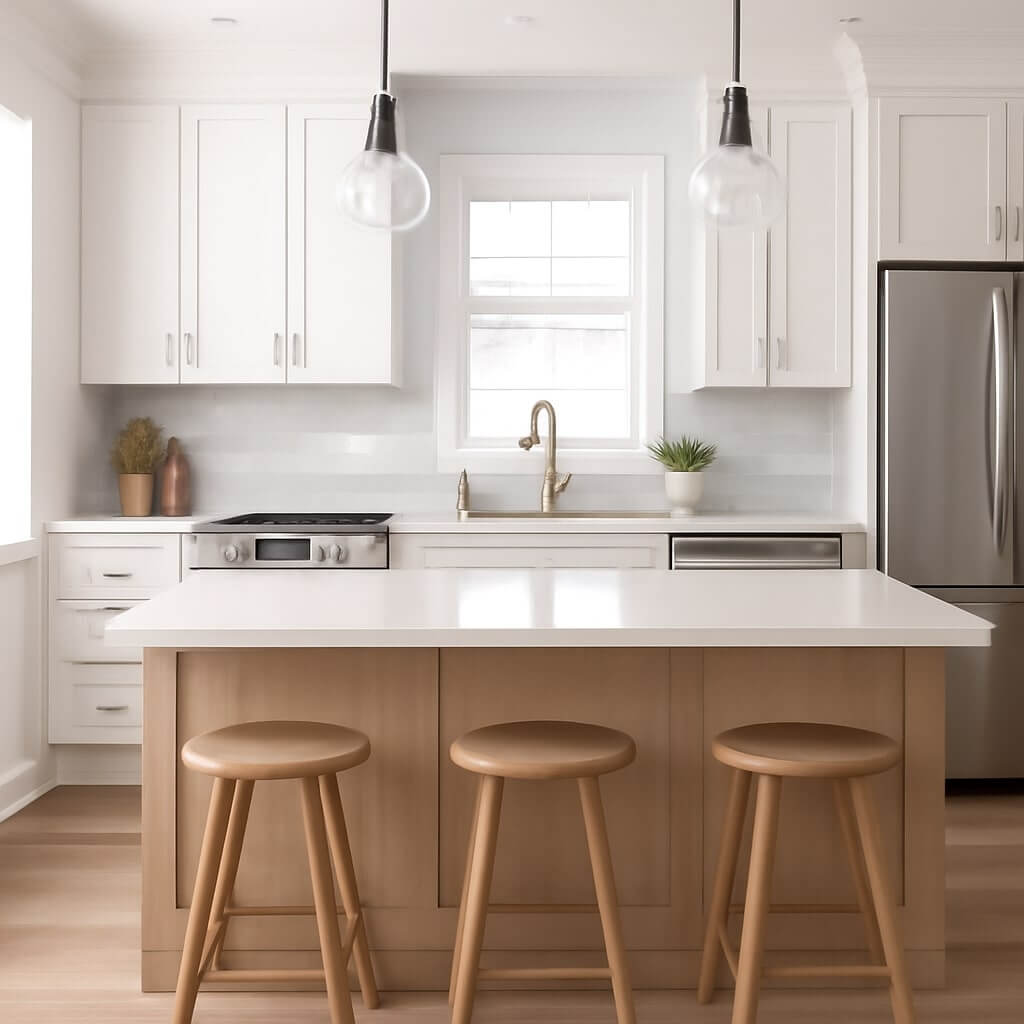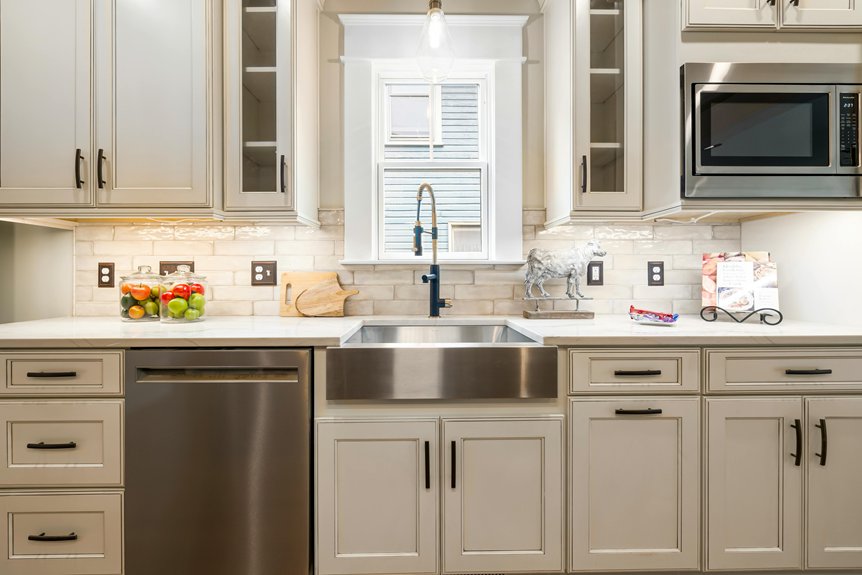When tackling a kitchen remodel in a tri-level house, you’ll encounter several key challenges. Limited space can make it tough to incorporate all the features you want. Ensuring smooth flow between levels is equally important to prevent awkward traffic patterns. Plus, you’ll need to coordinate design aesthetics to create a cohesive look throughout your home. Let’s explore these challenges in detail and discover effective strategies to navigate them.
Key Takeaways
- Space constraints in tri-level kitchens require innovative solutions like pull-out cabinets and multi-functional furniture to maximize functionality.
- Ensuring smooth flow between levels is essential, necessitating wide openings and defined pathways to reduce congestion.
- Coordinating design aesthetics across levels is crucial for visual coherence, including a consistent color palette and complementary furnishings.
- Traffic patterns must be carefully planned to prevent congestion, with strategic furniture placement guiding movement between kitchen and dining areas.
- Utilizing every inch of space effectively is vital, incorporating storage solutions that enhance overall kitchen efficiency and usability.
Navigating Limited Space
When you’re tackling a kitchen remodel in a tri-level house, maneuvering limited space can feel overwhelming.
To maximize your area, consider space-saving solutions like pull-out cabinets or corner drawers. These features utilize every inch effectively, making your kitchen more functional.
Maximize your kitchen space with pull-out cabinets and corner drawers for enhanced functionality and efficiency.
Incorporating multi-functional furniture, such as a kitchen island that doubles as a dining table, can also create a versatile environment. Look for stools that tuck away under the counter, allowing for easier movement.
With thoughtful planning and clever design choices, you can transform your compact kitchen into a stylish, efficient space that meets your needs without sacrificing comfort.
Ensuring Proper Flow Between Levels
Maximizing your kitchen’s functionality isn’t just about optimizing space; it’s also about ensuring a smooth flow between the different levels of your tri-level home. Pay attention to level changes and how they affect traffic patterns. Consider incorporating open sight lines and strategically placed furniture to guide movement.
| Level Change | Recommended Solution | Impact on Flow |
|---|---|---|
| Kitchen to Dining | Use a wide opening | Enhances accessibility |
| Dining to Living | Install a half-wall | Maintains visual connection |
| Kitchen to Lower Level | Add a staircase landing | Reduces congestion |
| Overall Flow | Create defined pathways | Improves efficiency |
Coordinating Design Aesthetics
Although coordinating design aesthetics in a tri-level house can seem challenging, it’s essential for creating a cohesive and visually appealing space.
Start by establishing a consistent color palette that flows seamlessly through each level. Choose hues that complement each other while reflecting your personal style.
Aim for style coherence by selecting furniture and fixtures that share a common theme, whether it’s modern, rustic, or traditional. Pay attention to details like cabinetry and countertops, ensuring they harmonize with the overall design.
Conclusion
When tackling a tri-level kitchen remodel, addressing limited space, ensuring smooth flow, and coordinating design aesthetics are key to success. By incorporating innovative storage solutions, planning clear pathways, and maintaining a cohesive color palette, you can create a functional and visually appealing kitchen. Remember, every choice you make impacts the overall harmony of your home. Embrace these challenges as opportunities to enhance your living space, and you’ll end up with a kitchen that truly reflects your style and needs.




